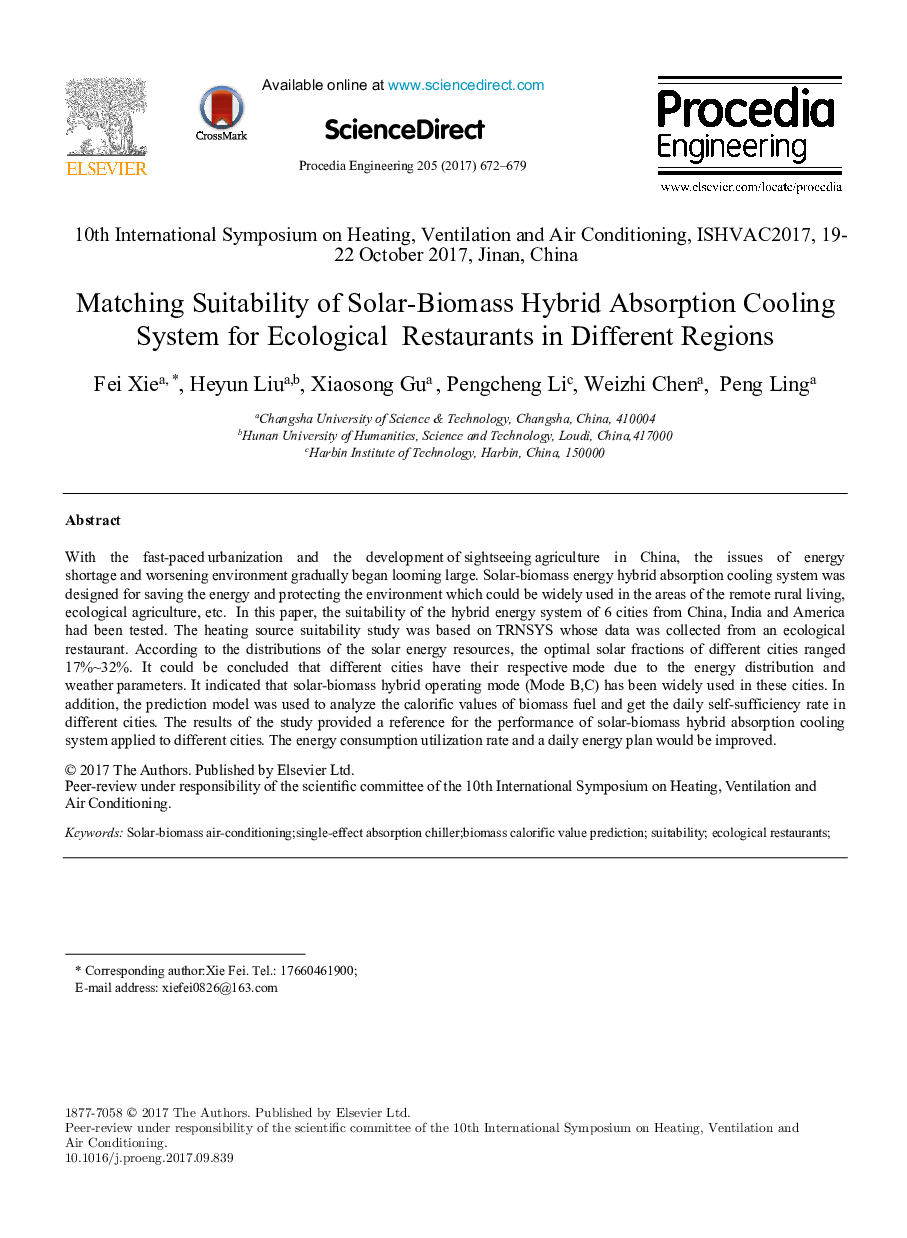| Article ID | Journal | Published Year | Pages | File Type |
|---|---|---|---|---|
| 7227860 | Procedia Engineering | 2017 | 8 Pages |
Abstract
With the fast-paced urbanization and the development of sightseeing agriculture in China, the issues of energy shortage and worsening environment gradually began looming large. Solar-biomass energy hybrid absorption cooling system was designed for saving the energy and protecting the environment which could be widely used in the areas of the remote rural living, ecological agriculture, etc. In this paper, the suitability of the hybrid energy system of 6 cities from China, India and America had been tested. The heating source suitability study was based on TRNSYS whose data was collected from an ecological restaurant. According to the distributions of the solar energy resources, the optimal solar fractions of different cities ranged 17%~32%. It could be concluded that different cities have their respective mode due to the energy distribution and weather parameters. It indicated that solar-biomass hybrid operating mode (Mode B,C) has been widely used in these cities. In addition, the prediction model was used to analyze the calorific values of biomass fuel and get the daily self-sufficiency rate in different cities. The results of the study provided a reference for the performance of solar-biomass hybrid absorption cooling system applied to different cities. The energy consumption utilization rate and a daily energy plan would be improved.
Keywords
Related Topics
Physical Sciences and Engineering
Engineering
Engineering (General)
Authors
Fei Xie, Heyun Liu, Xiaosong Gu, Pengcheng Li, Weizhi Chen, Peng Ling,
